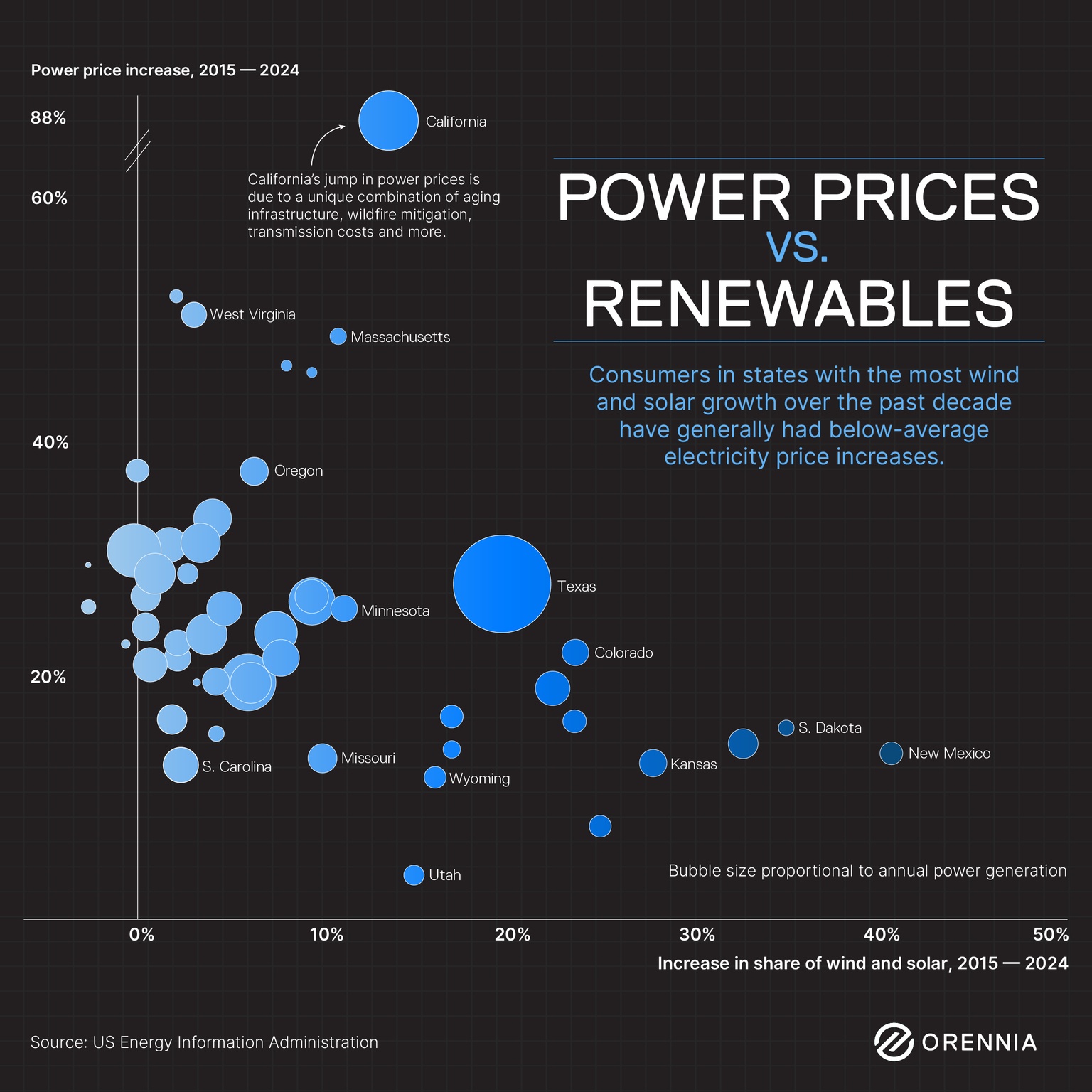
Aaron Foyer
Vice President, Research and Analytics

Aaron Foyer
Vice President, Research and Analytics

The final price consumers pay for electricity is shaped by a complex mix of factors: supply and demand dynamics, fuel costs, weather patterns, grid constraints and regulatory policy all play a role.
The renewable debate: Pundits regularly argue that the rise of renewable energy is driving up electricity prices. But the data tells a different story. On average, states that have expanded their share of renewables the most over the past decade have seen below-average increases in electricity prices.
That said, clean power policies don’t always help electricity prices. In parts of New England and New York, for example, prices have risen despite limited wind and solar. Policy decisions like carbon pricing and the retirement of existing nuclear and gas-fired plants have likely contributed.
California’s case: The Golden State is often cited as a prime example of renewables driving up costs, with residential power prices nearly doubling in the past decade. But the state is an outlier. A combination of wildfire-related grid investments, ambitious decarbonization targets, and high levels of distributed rooftop solar have all contributed to the price surge.
What’s next: Renewables have played a key role in meeting growing electricity demand, but further progress will likely depend on continued investment in grid infrastructure and breakthroughs in long-duration energy storage.
Data-driven insights delivered to your inbox.